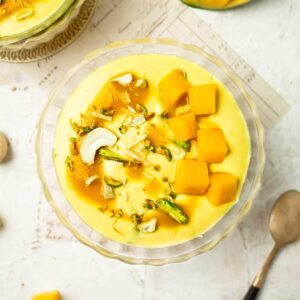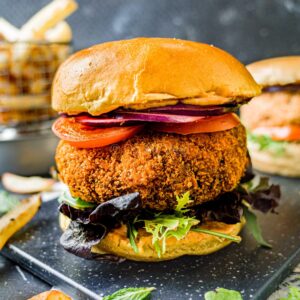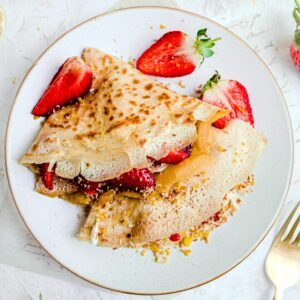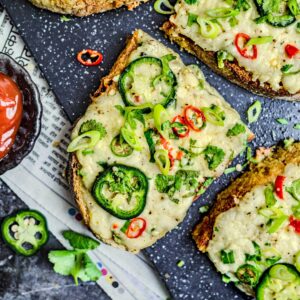Ukadiche Modak, Maharashtrian Steamed Modak
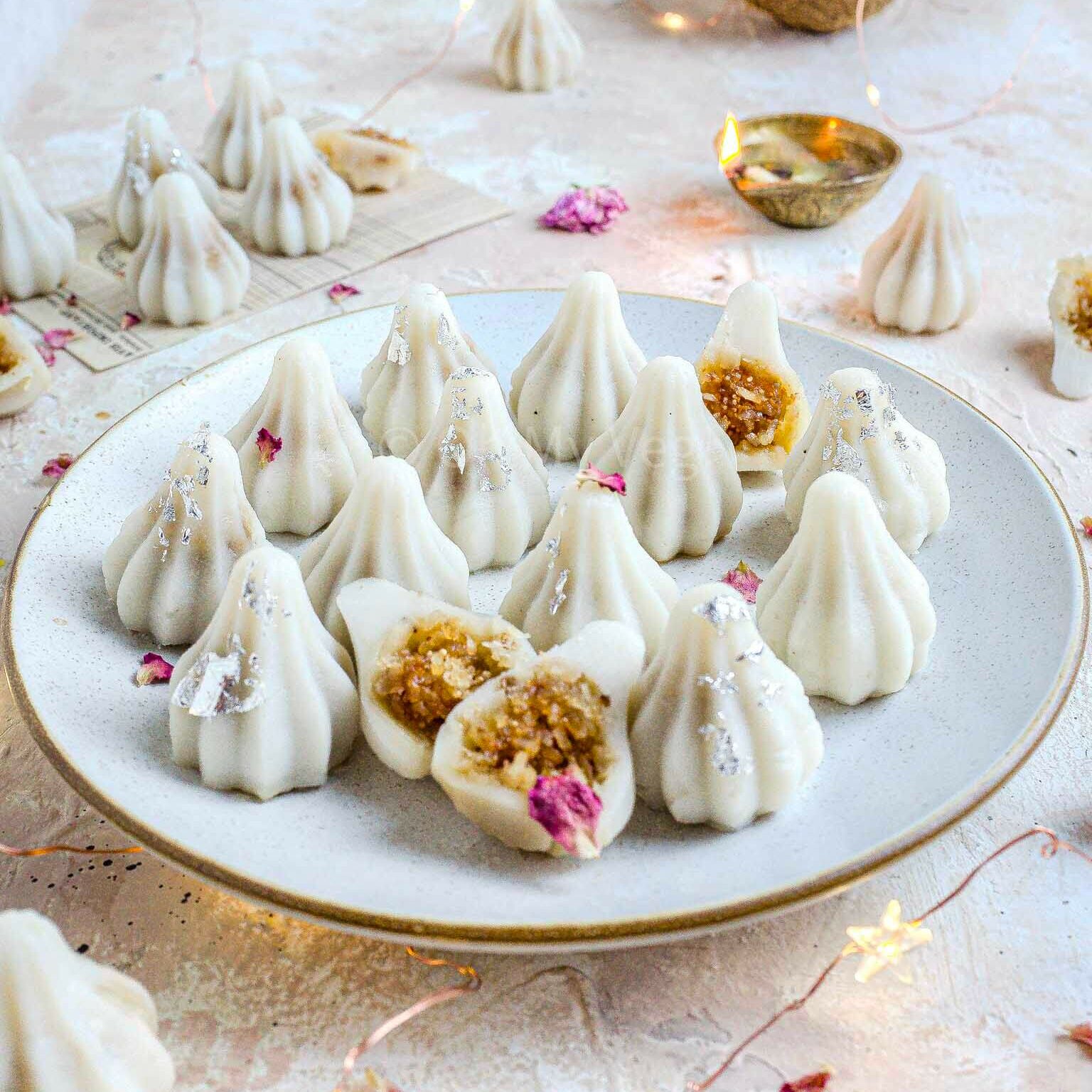
These ukadiche modak — sweet Maharashtrian steamed dumplings — have the festive flavour of India in every bite. Inside the soft steamed rice flour layer lies an aromatic, tropical filling of toasted coconut sweetened with honey-golden jaggery, gently spiced with warm cardamom, and mixed with nutty ground almonds.
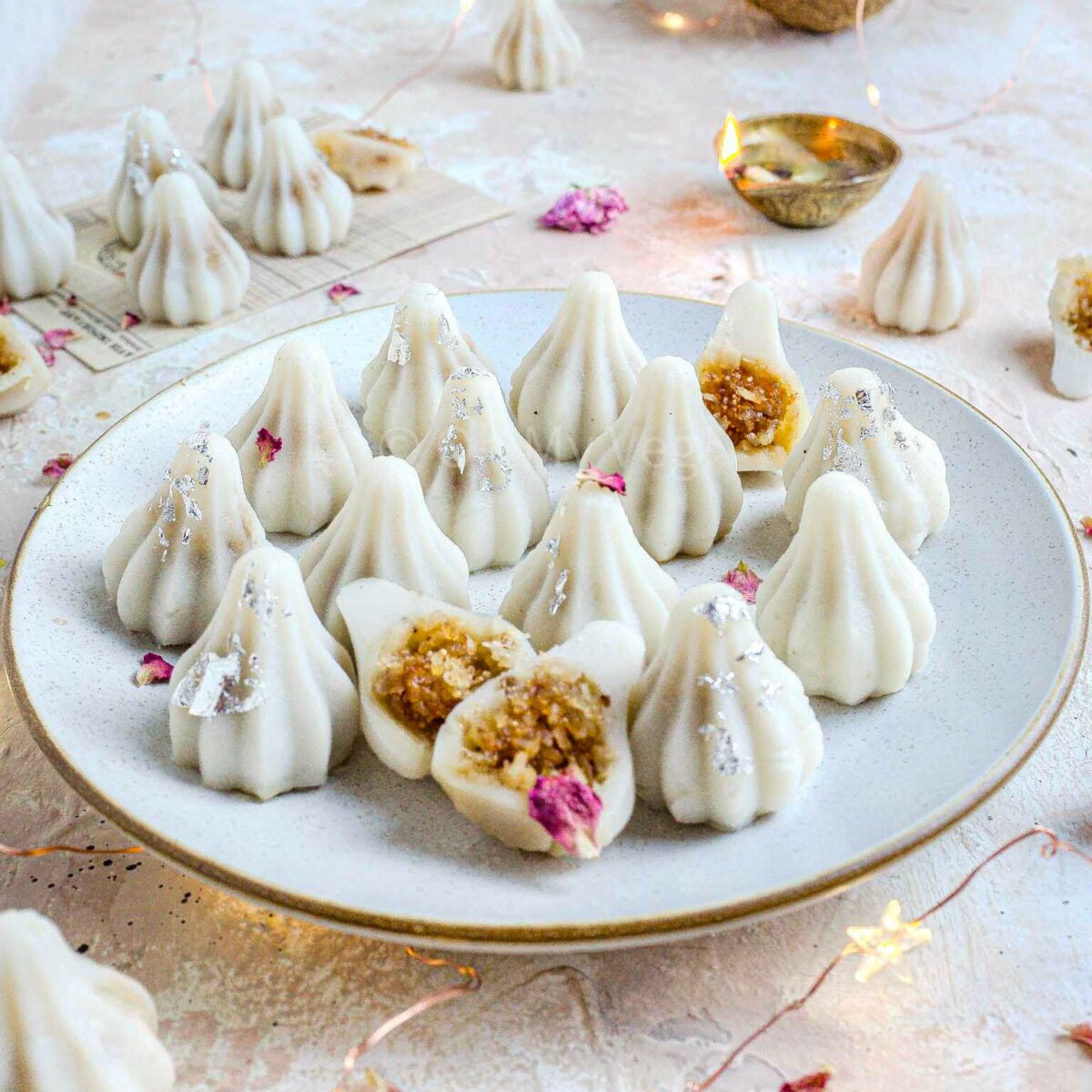
Some of my most cherished recipes are those prepared for festive celebrations. After all, the best dishes often mark special occasions! These ukadiche modak for Ganesh Chaturthi are a perfect example.
Come late August or September, Maharashtrian households are ablaze with festive spirit as they prepare for the 10-day festival of Ganesh Chaturthi, which marks the birth of the Hindu deity Lord Ganesh (or Ganpati Bappa) with many prayers, chanting, large public gatherings, and countless modak. The festival boomed in popularity when the legendary Marathi freedom fighter Lokamanya Bal Gangadhar Tilak gathered everyone together to celebrate, hoping it would build a national Hindu identity helpful to overthrowing British colonial rule. Since then, Ganesh Chaturthi has been zealously celebrated by Maharashtrian Hindus, with its observance also extending to neighbouring states.
But why is ukadiche modak the flagship food of the festival? Well, it happens to be Lord Ganesh’s favourite sweet! And it’s easy to see why.
Alongside ukadiche modak, you can also serve a range of other Indian desserts, like besan ladoo, puran poli, seviyan kheer, gajar halwa, sheera, or even savoury snacks like dahi puri chaat bombs or sabudana vada. You can read more about Ganesh Chaturthi foods in my roundup here — Yum!
Are you ready to learn all the tips and tricks to make homemade ukadiche modak that are thoroughly irresistible? Let’s jump into it.
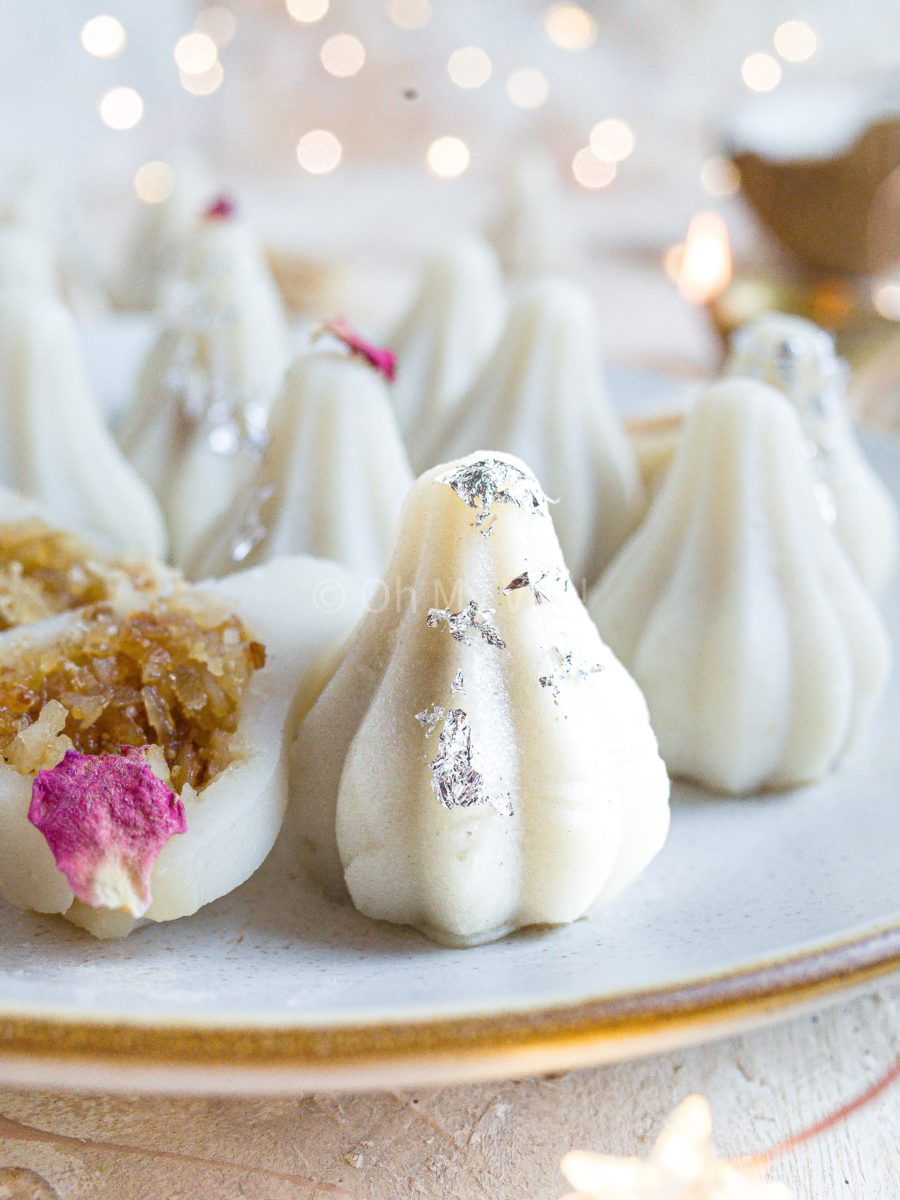
What is Ukadiche Modak?
Ukadiche modak are sweet dumplings from Maharashtra in Western India.
Most people associate dumplings with savory recipes like vegetable gyoza and spinach momo, but that’s not always right! Asian cuisine boasts countless sweet dumplings — and in the U.K., we have the classic golden syrup dumplings!
Modak has a soft outer covering made from rice flour. The inner stuffing is a tempting mixture of tropical ghee-toasted coconut, poppy seeds, ground almonds, and floral cardamom powder sweetened with grated jaggery.
People usually eat ukadiche modak for Ganesh Chaturthi, a 10-day Hindu festival worshipping Lord Ganesha (or, as Marathi speakers often call him, Ganpati Bappa) widely celebrated in Maharashtra. Modak is said to be Lord Ganesha’s favorite sweet!
However, people also enjoy modak during festivals such as Holi and Diwali, alongside recipes like karanji and bharli vangi. Ukadiche modak is also served at special occasions like weddings or birthdays or enjoyed as part of a thali, eaten as an after-meal treat.
There is More than 1 Type of Maharashtrian Modak
Ukadiche modak may be the most widespread, but it’s not the only famous modak in India!
- Ukadiche modak are sweet steamed dumplings. “Ukadiche” means “steamed” in Marathi language, which refers to the cooking process.
- Talniche modak are sweet fried dumplings. Unlike ukadiche modak, this variety uses a wheat-flour outer pastry.
- Other modern modak include chocolate modak, mawa modak (milk-based), kesar modak (saffron modak), malai modak (with sweet paneer), rose modak, and many more.
Ukadiche Modak Origin
Would you be surprised to know ukadiche modak is an ancient Indian heritage recipe? There are references to modak in the ancient Hindu epics Ramayana and Mahabharata, dating to around 300 BC, and ancient Tamil literature also references the treats.
The name “modak” is said to originate from the Sanskrit word “moda,” meaning “happiness!” That’s because Lord Ganesha is said to bless you with happiness and good luck.
Modak’s origins in India are unclear, although it is primarily associated with Maharashtrian cuisine, where millions enjoy the sweet every year! However, other Southern states also make variations of modak: kadubu in Karnataka, kozhukhattai or kolukattai in Tamil Nadu, and modakam in Telangana, making it uncertain where its true roots lie.
India isn’t the only country to enjoy modak, either! It’s fascinating to note that Japanese Buddhists craft a similar sweet called “kangidan” as an offering to a deity known as Kangiten, the cultural and religious equivalent of Lord Ganesha. Kangiten is typically depicted as an intertwined male and female couple with elephant heads, symbolizing duality. Like modak, Japanese cooks shape this treat like a money bag, but unlike modak, it’s filled with spiced red bean paste and encased in a fried mixture of rice and wheat flour.
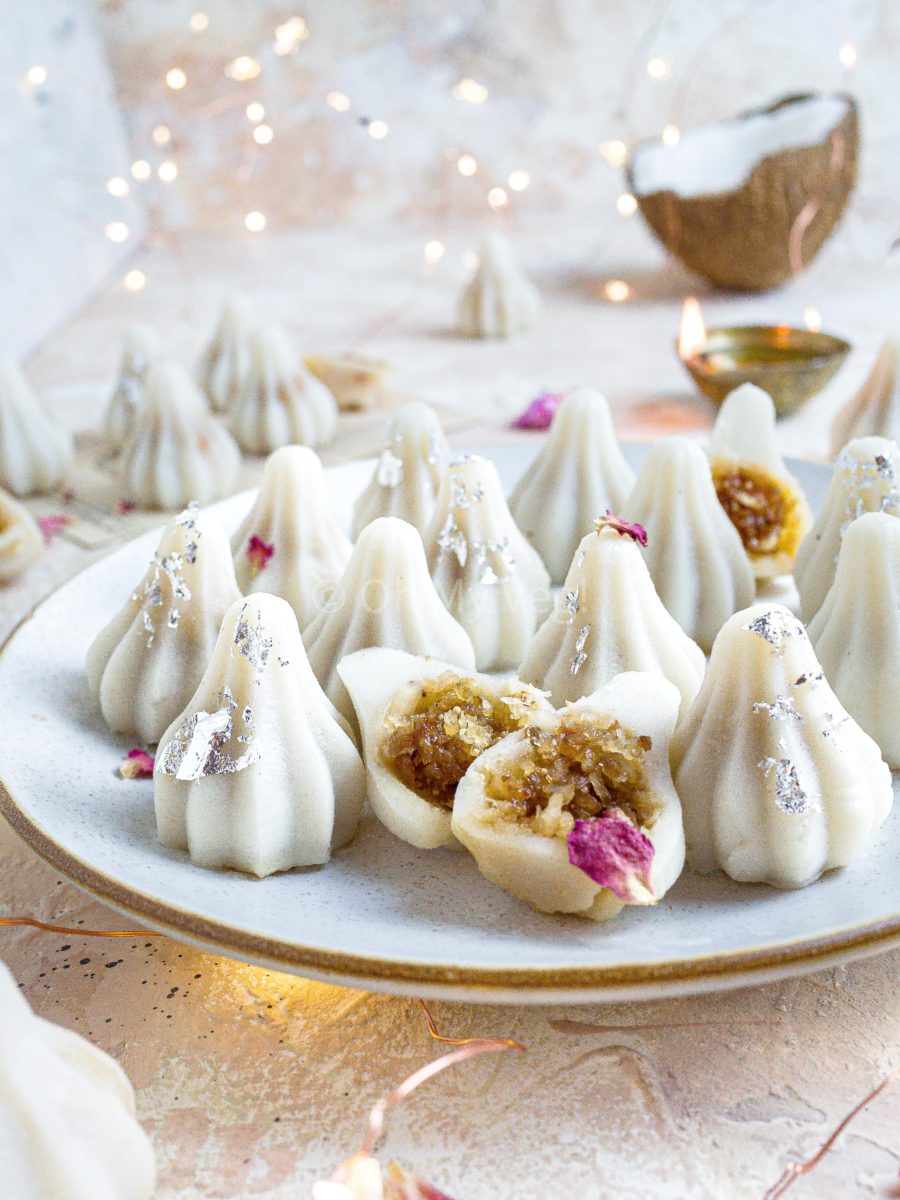
Ingredients in Ukadiche Modak
Arm yourself with a pen and paper to write a shopping list. This ukadiche modak employs lots of Marathi ingredients, like rice flour, grated coconut (preferably fresh), and poppy seeds, among other things. If you cook Indian food often, you’ll likely already have many of these ingredients in your pantry!
Let’s dive into how we use each ingredient in the dish, plus its flavour profile. This methodology helps us understand the dish as a whole. You’ll want to scroll down to the recipe card for precise measurements.
Ingredients for Modak Dough
- Rice flour forms the basis of the modak dough. It has a subtle flavour and delicate texture and is naturally gluten-free. Use fine rice flour for the best results.
- Water brings the whole dough together.
- Ghee added to the water used in cooking the dough helps to make it soft. It also stops the dough from sticking to the pan while steaming!
- Sea salt provides added tastiness to the modak dough.
- Milk makes the dough extra smooth and soft while adding a certain creaminess.
Ingredients for the Maharashtrian Modak Filling
- Ghee, also known in Marathi as “toop,” is vital for cooking the filling. It provides a pleasant buttery and slightly nutty flavour.
- Freshly grated coconut is the main component of the filling, adding a sweet, milky, and gently toasted flavour profile.
- Jaggery is a traditional sweetener. It has a rich syrup, caramel-like flavour with more depth than white sugar.
- Almonds are optional, but amp up the gorgeous nutty aroma and taste of the ukadiche modak.
- White poppy seeds are sweet and nutty. They complement the fragrance of Indian spices. Make sure you use white poppy seeds, not the more common black or blue ones; white poppy has a milder taste.
- Cardamom powder is a complex spice with peppery, citrusy, floral, and minty flavour notes. It frequently pops up in Indian desserts like seviyan kheer and ukadiche modak.
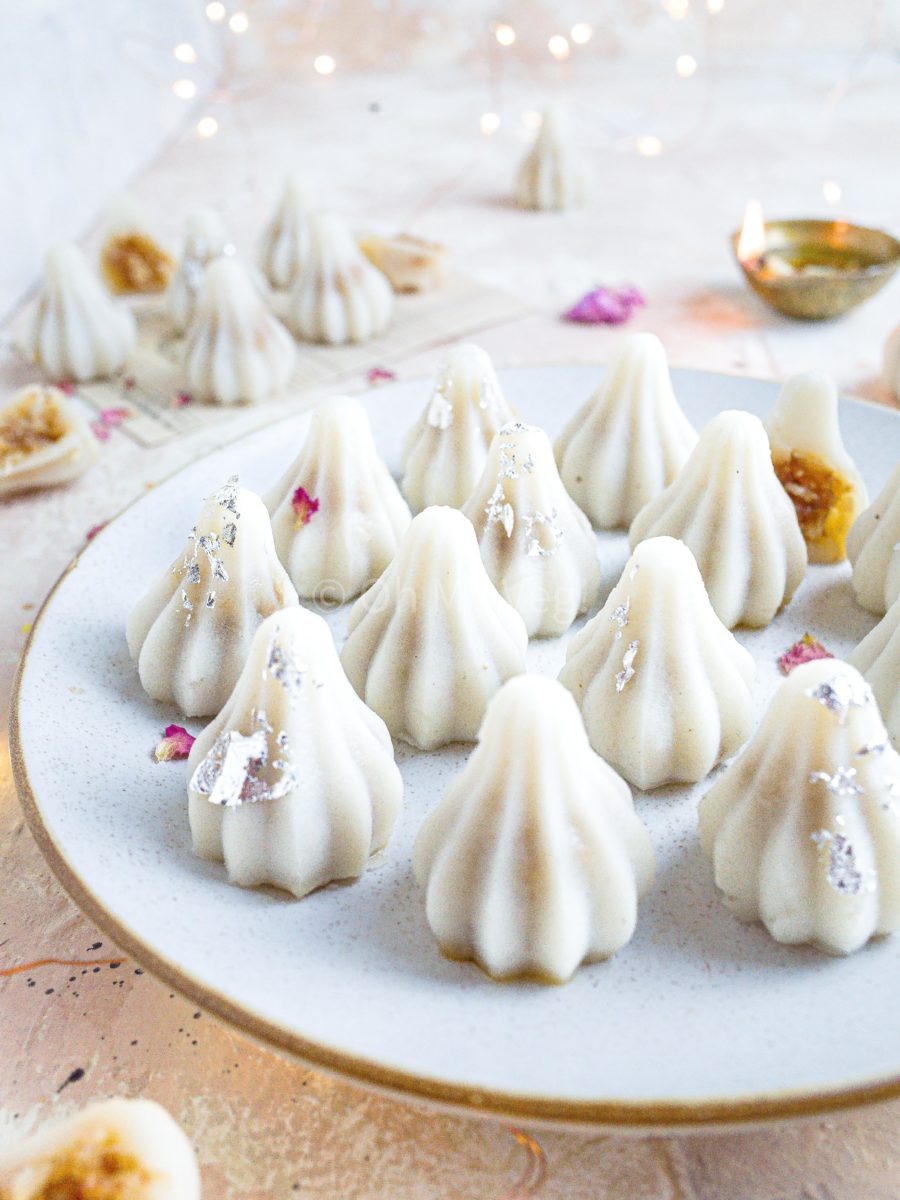
How to Make Ukadiche Modak
Once you split the process into manageable steps, ukadiche modak is surprisingly straightforward to cook! Familiarize yourself with these steps before following the detailed instructions in the recipe card.
- Make the dough by steaming rice flour in boiling water with salt and ghee.
- Make the stuffing by roasting poppy seeds, grated coconut, jaggery, and ground almonds in ghee until the jaggery melts.
- Knead the dough with milk until smooth.
- Make the modak, starting by separating it into small balls. Using the mould, shape the modak (more information below).
- Steam the modak until cooked, then serve with melted ghee.
How to Make Ukadiche Modak in Mould
I tried making ukadiche modak years and years ago. Back then, I had a lot of enthusiasm but not enough Maharashtrian cooking experience, so you can imagine how it went!
Honestly, the biggest issue I faced was that I had no moulds. The modak I made tasted irresistible — but didn’t look so good!
So if you’re nervous about making ukadiche modak for the first time, or you’ve had bad experiences before, using a mould will make it practically effortless. Trust me! Shaping them by hand is incredibly hard without years of practice.
- First, open the mould and grease it with ghee (or neutral oil). This step is crucial!
- Place a ball of modak dough inside the mould and close it, securing the latch.
- From the opening in the bottom of the mould, use your fingers to begin pressing the dough into the sides of the mould. The aim is to achieve a thin, even layer. The excess dough will spill out of the bottom; don’t worry.
- Take some modak stuffing and carefully place it inside the mould from the bottom.
- Use the excess dough to seal the bottom of the modak.
- Carefully open the mould and remove your modak.
Repeat the process, remembering to grease the mould each time. You’re all set to cook the modak!
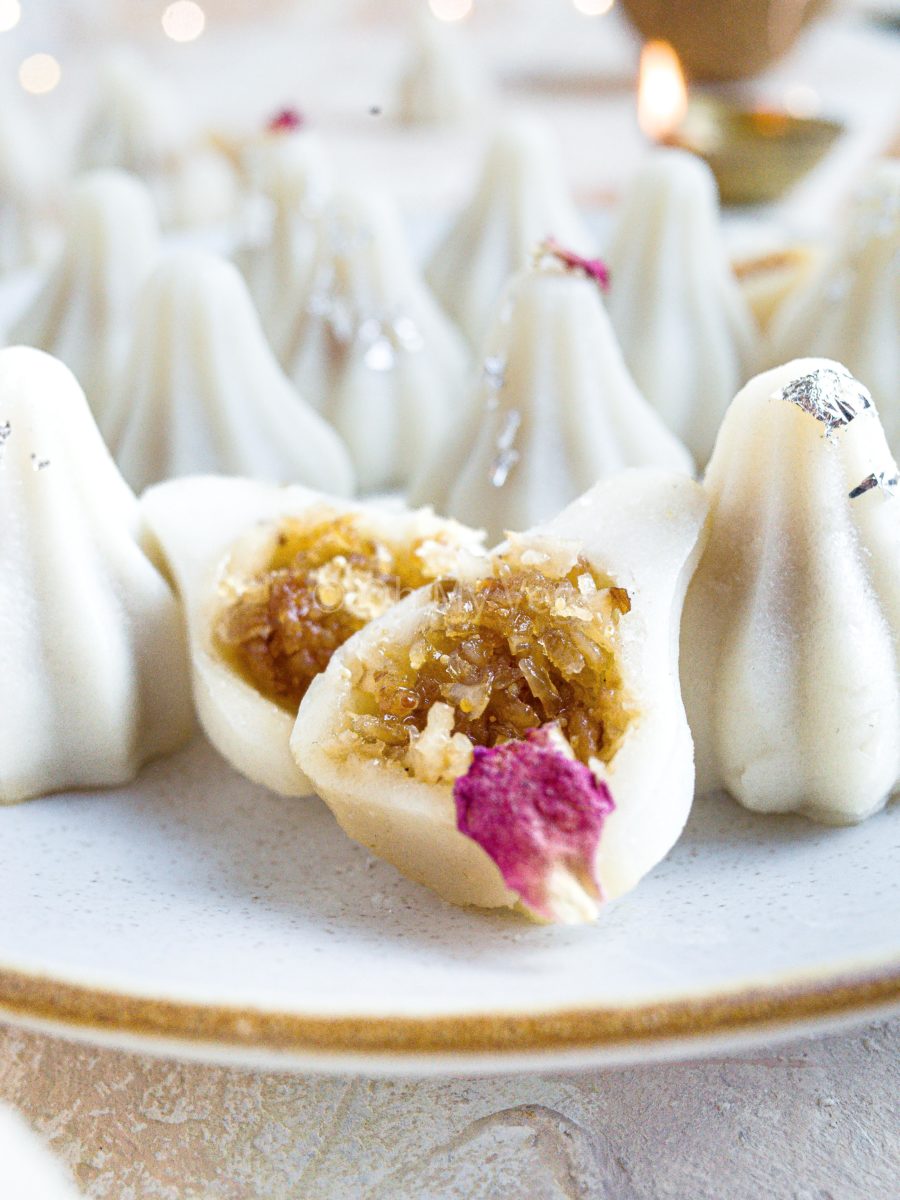
Tips to Make Ukadiche Modak
Ukadiche modak may be a surprisingly straightforward recipe, but things can still go wrong! To minimize the chances of mistakes, I always recommend following the recipe to a T and paying extra attention to these tips.
- Sieve the rice flour for the best texture in the modak dough.
- Lightly grease your hands before kneading to avoid the dough sticking to your palms.
- Knead the modak dough until it’s completely smooth. This procedure may take longer than you expect. It’s normal for it to take more than five minutes!
- Avoid overcooking the jaggery-coconut filling, or it can become too hard, making the modak impossible to fill.
- Cook all the moisture from the filling, or the excess moisture will leak from the bottom of the modak while steaming them. It’s a delicate balance!
- Grease the modak moulds with ghee (or sesame oil if you want to make a vegan version) to ensure the modak is easy to remove and preserve their pretty patterns.
- Cover the dough at all times to avoid it drying out! For example, when shaping a modak in the mould, place a towel over the dough you’re not using. Also, once you shape the modak, steam them immediately or cover them until you do.
Got it? Okay, I think you’re ready to cook the recipe!

How to Serve Ukadiche Modak
Traditionally, you serve ukadiche modak with melted homemade toop (ghee or clarified butter). The buttery taste complements the soft dough and syrupy nutty filling in an unbelievably irresistible fashion!
If you want to make the ukadiche modak as a prasad (offering) to Ganpati Bappa, avoid tasting any components while cooking, and wait for the puja to complete before eating the modak. After the puja ceremony, the modak is no longer just food — it’s blessed. Now, you can eat as many as you like.
Usually, you must serve at least 21 modak to Lord Ganesha. Why? The stories vary, but, in short, even as a child, Lord Ganesh had an insatiable appetite. He would feast on many ladoo, sabji, and other food, but nothing satisfied his hunger! That is, until he ate modak — after savouring the delicious treat, he burped, indicating his satisfaction. According to the story, his father, Lord Shiva, burped at the same time … 21 times!
I like to serve ukadiche modak alongside other classic Marathi dishes, like varan bhaat, batatyacha rassa, bhindi masala, rice, and a bread dish like poli (chapati/roti), puri, or bhakri.
How to Store Ukadiche Modak
Modak doesn’t last long! They’re so delectable you’ll want to gobble them all up, but modak is also homemade food. Unlike store-bought desserts, this recipe has no preservatives, so the modak is best eaten fresh.
Therefore, I suggest storing the modak in the refrigerator, in an airtight container, for a maximum of 2-3 days.
If you’re concerned you won’t be able to finish the modak, share them with your family! You can also cut the recipe quantities in half.
You can reheat the ukadiche modak by steaming them quickly for 2-3 minutes. Indisputably, this method results in the best soft, fresh texture. Reheating in the microwave or a pan makes the modak unpleasantly chewy.
This Recipe Is:
Ukadiche Modak
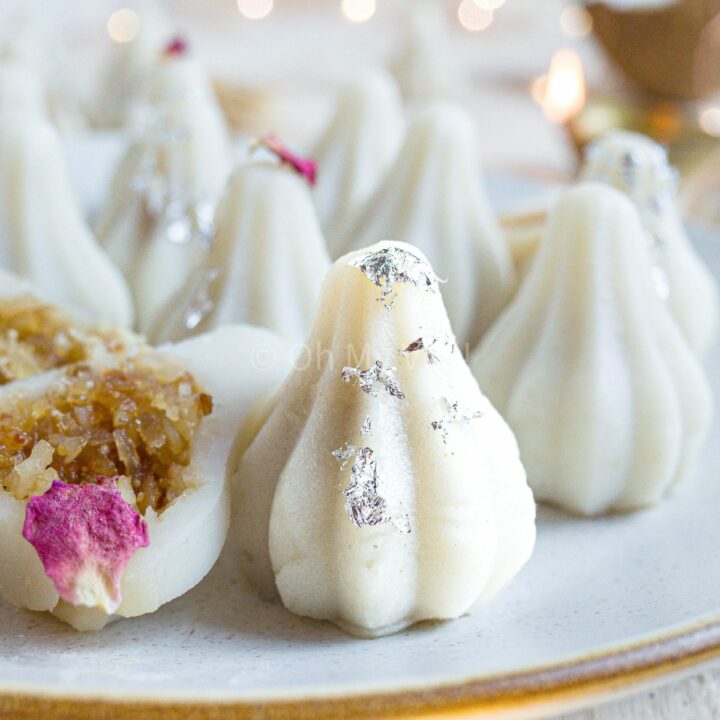
Traditional Maharashtrian ukadiche modak are sweet steamed dumplings made from rice flour, with a sweet coconut and jaggery filling. The perfect recipe for Ganesh Chaturthi.
Ingredients
For the Dough
- 100g Rice Flour
- 300ml Water
- Pinch of Sea Salt
- 1/2 tsp Ghee
- 1 tbsp Milk
For the Stuffing
- 1/4 tsp Ghee
- 1/2 tsp Poppy Seeds
- 100g Grated Fresh Coconut
- 100g Grated Jaggery
- 10 Almonds, ground to powder
Instructions
- Make the dough. Add 300ml water, sea salt, and ghee to a large saucepan over medium heat, and bring it to a boil. Once boiling, add the rice flour and immediately start stirring. Once the rice flour absorbs all the water, turn off the heat, cover the pan, and leave to steam for around 5 minutes.
- Make the stuffing. In a small frying pan, add ghee and heat over a low temperature. Add the poppy seeds and wait for them to crackle. Now add the grated coconut, grated jaggery, and powdered almonds. Cook the mixture on low heat, stirring regularly, until the jaggery melts and becomes thick — be careful not to overcook. Leave to cool.
- Knead the dough. Take the rice flour dough, grease your hands, and begin to knead the dough. Add 1 tbsp milk to adjust the consistency. When it becomes smooth, without any cracks, the dough is kneaded enough.
- Make the modak. Separate the dough into 24 small balls. Grease your modak mold with ghee, then close it. Press the dough ball into the mold and using your finger, hollow the middle. Add a little stuffing into the middle then use the excess dough to seal the bottom. Open the mold and take out the formed modak. Cover with a damp cloth and repeat the process for the remaining modak.
- Steam the modak. Heat water in the bottom of a steamer pan and grease the steamer plates. Once the water comes to a boil, add the modak to the steamer plates. Cover and steam on low-medium heat for 10 minutes.
Notes
Depending on the size of your modak mold, this recipe may make slightly fewer or more ukadiche modak.
Recommended Products
As an Amazon Associate and member of other affiliate programs, I earn from qualifying purchases.
Nutrition Information:
Yield:
24Serving Size:
1Amount Per Serving: Calories: 51Total Fat: 2gSaturated Fat: 1gTrans Fat: 0gUnsaturated Fat: 0gCholesterol: 0mgSodium: 11mgCarbohydrates: 8gFiber: 1gSugar: 4gProtein: 1g
Nutrition information isn’t always accurate.







